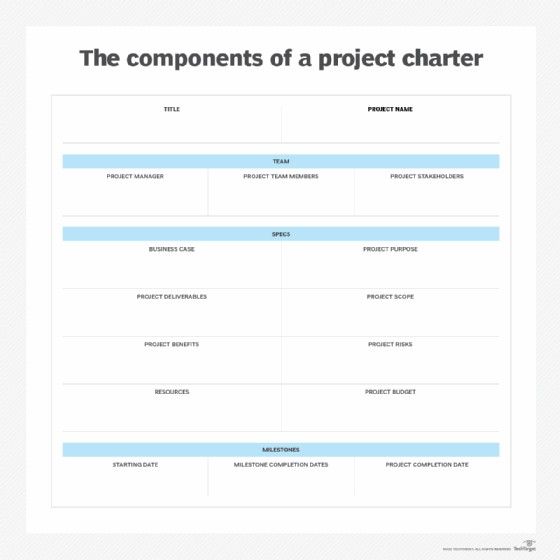A project charter is a concise, formal document that officially launches a project. It provides the project manager with the authority to allocate resources and begin work. Serving as a foundational document, a project charter articulates a shared understanding of the project’s objectives, goals, and resource requirements before detailed planning commences. It is a crucial component of successful project management.
Project charters are vital because they establish the project’s purpose and scope, acting as a constant reference point throughout its lifecycle. This document can also demonstrate the project’s potential value and return on investment, helping to secure approval and funding.
The project charter enables the project manager to clearly communicate the project’s scope, objectives, participant roles, and potential risks to all stakeholders. In some organizations, it serves a similar function to a business case. The length and complexity can vary; a charter might be a multi-page document in a large corporation or a brief summary in a smaller organization.
Key Elements of a Project Charter
Project charter templates usually include these key sections:
-
Project Goals: This section clearly and concisely explains why the project is being undertaken. It defines the overall purpose and sets the stage for defining the project’s scope.
-
Project Participants & Roles: This clearly identifies all individuals involved in the project and specifies their respective roles and responsibilities.
-
Stakeholders: This lists all individuals or groups who are directly affected by the project or have a vested interest in its outcome. This includes project sponsors and those who need to be kept informed of the project’s progress.
-
Requirements: This outlines the resources required to achieve the project’s objectives. This could include personnel, equipment, budget, and other essential resources.
-
Constraints: This section identifies potential limitations, obstacles, or bottlenecks that could hinder the project’s progress. Addressing these proactively helps in mitigating risks.
-
Milestones: This defines significant checkpoints in the project’s timeline, including the start date, ideal completion date, and other key deadlines.
-
Communication Plan: This details how the project manager will communicate with project owners, participants, and key stakeholders throughout the project lifecycle, ensuring transparency and keeping everyone informed.
-
Deliverables: This clearly outlines the specific products, services, or results that the project will produce upon completion. These are the tangible outcomes of the project.
-
Budget: Provides a high-level overview of the project’s estimated costs. It’s a crucial element for resource allocation and financial planning.
The project manager typically develops the project charter at the very beginning of the project. Signing the charter serves as formal authorization, granting the project manager the green light to officially start the project, including the use of organizational resources and funds. For large, multi-phase projects, a separate charter can be created for each phase.
Best Practices for Creating an Effective Project Charter
To create a strong and effective project charter, project managers should consider the following best practices:
-
Keep it Concise: Aim for brevity in each section. The project charter should provide a high-level overview rather than an exhaustive breakdown.
-
Involve the Team: Gathering input from the project team helps establish realistic goals, identify potential risks, and ensure everyone is aligned.
-
Use a Template: Leverage a standardized project charter template to maintain consistency, clarity, and ensure all essential elements are included.
-
Ensure Clarity: Organize the charter for easy readability. Clearly label each section and use concise language.
-
Develop an Implementation Plan: Following the creation of the charter, create a plan for implementing the project. This involves engaging with project team members, stakeholders, and securing necessary resources.
 A project charter template.
A project charter template.Alt text: Diagram illustrating the typical components of a project charter, including project name, description, team members, roles, scope, risks, start date, milestones, and completion dates.
A project charter template provides project managers with the fundamental information required to initiate a project. While the order of components might vary, a project charter usually begins with general project details such as the project’s name, a brief description, and the individuals involved. A dedicated section should outline each team member’s roles and responsibilities.
Furthermore, project charters should include:
- A descriptive project name that accurately reflects the project’s objectives.
- A clear definition of the project scope, outlining the boundaries and limitations of the project’s deliverables.
- An assessment of potential risks, identifying the most probable and impactful events that could occur.
- A project timeline that includes start dates, key milestones, and the anticipated completion date.
By following these guidelines, project managers can ensure that the project charter serves as a valuable tool for guiding the project to a successful outcome. The document should serve as a reference point that can be reviewed and revisited throughout the project’s lifecycle. It streamlines the entire project management process.